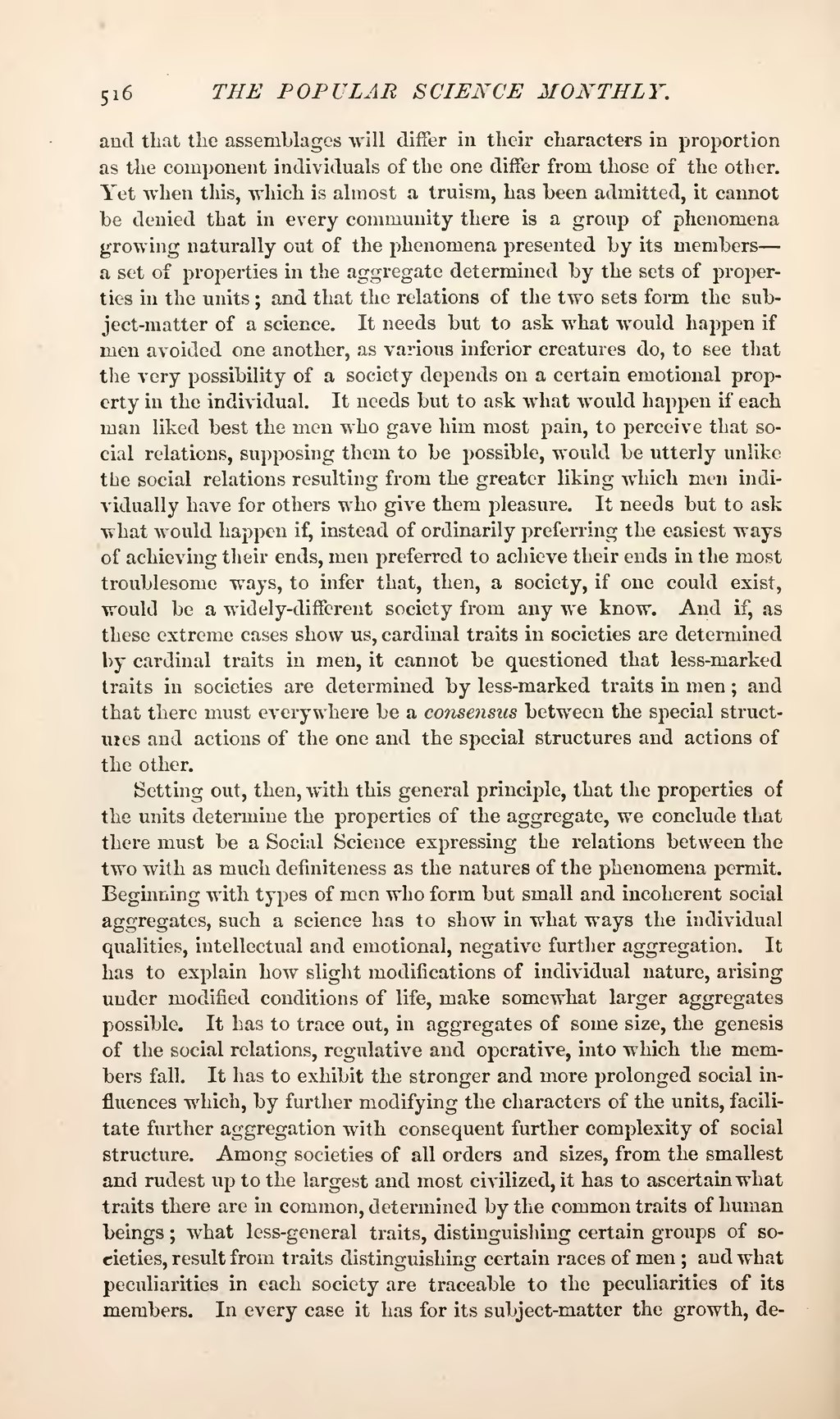and that the assemblages will differ in their characters in proportion as the component individuals of the one differ from those of the other. Yet when this, which is almost a truism, has been admitted, it cannot be denied that in every community there is a group of phenomena growing naturally out of the phenomena presented by its members—a set of properties in the aggregate determined by the sets of properties in the units; and that the relations of the two sets form the subject-matter of a science. It needs but to ask what would happen if men avoided one another, as various inferior creatures do, to see that the very possibility of a society depends on a certain emotional property in the individual. It needs but to ask what would happen if each man liked best the men who gave him most pain, to perceive that social relations, supposing them to be possible, would be utterly unlike the social relations resulting from the greater liking which men individually have for others who give them pleasure. It needs but to ask what would happen if, instead of ordinarily preferring the easiest ways of achieving their ends, men preferred to achieve their ends in the most troublesome ways, to infer that, then, a society, if one could exist, would be a widely-different society from any we know. And if, as these extreme cases show us, cardinal traits in societies are determined by cardinal traits in men, it cannot be questioned that less-marked traits in societies are determined by less-marked traits in men; and that there must everywhere be a consensus between the special structures and actions of the one and the special structures and actions of the other.
Setting out, then, with this general principle, that the properties of the units determine the properties of the aggregate, we conclude that there must be a Social Science expressing the relations between the two with as much definiteness as the natures of the phenomena permit. Beginning with types of men who form but small and incoherent social aggregates, such a science has to show in what ways the individual qualities, intellectual and emotional, negative further aggregation. It has to explain how slight modifications of individual nature, arising under modified conditions of life, make somewhat larger aggregates possible. It has to trace out, in aggregates of some size, the genesis of the social relations, regulative and operative, into which the members fall. It has to exhibit the stronger and more prolonged social influences which, by further modifying the characters of the units, facilitate further aggregation with consequent further complexity of social structure. Among societies of all orders and sizes, from the smallest and rudest up to the largest and most civilized, it has to ascertain what traits there are in common, determined by the common traits of human beings; what less-general traits, distinguishing certain groups of societies, result from traits distinguishing certain races of men; and what peculiarities in each society are traceable to the peculiarities of its members. In every case it has for its subject-matter the growth, de-
